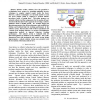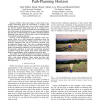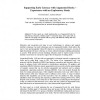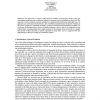197 search results - page 28 / 40 » A 3D robot simulation for education |
SIGCSE
2003
ACM
14 years 4 months ago
2003
ACM
We report the results of a year-long experiment in the use of robots to teach computer science. Our data set compares results from over 800 students on identical tests from both r...
ICRA
2010
IEEE
13 years 8 months ago
2010
IEEE
Robotic cardiac catheters have the potential to revolutionize heart surgery by extending minimally invasive techniques to complex surgical repairs inside the heart. However, cathet...
IROS
2006
IEEE
14 years 5 months ago
2006
IEEE
Abstract— Mobile robots need maps or other forms of geometric information about the environment to navigate. The mobility sensors (LADAR, stereo, etc.) on these robotic vehicles ...
GI
2007
Springer
14 years 5 months ago
2007
Springer
: We here report on a study exploring the use of augmented books for early literacy education. Children aged 6-7 interacted alone and in pairs with an AR-book. The study was iterat...
CORR
2004
Springer
13 years 10 months ago
2004
Springer
An approach to robotics called layered evolution and merging features from the subsumption architecture into evolutionary robotics is presented, and its advantages are discussed. T...




